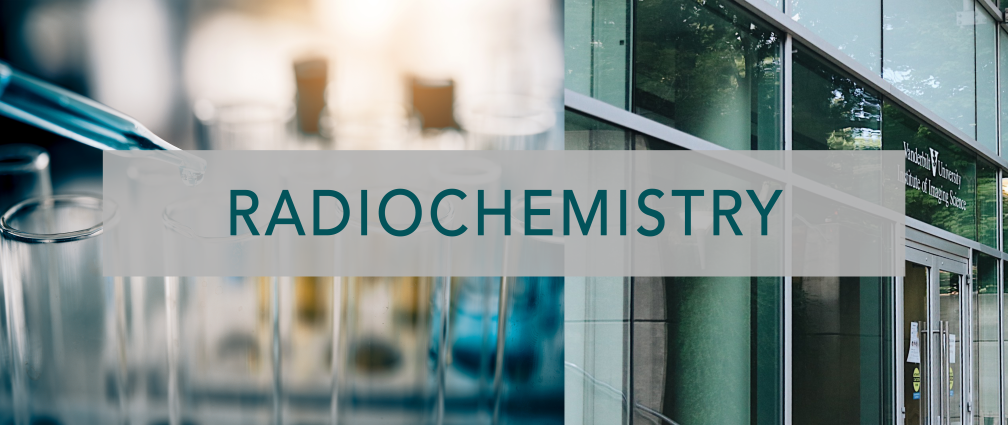Overview
The major objective of the Center for Radiochemistry is to develop new molecular imaging tracers non-invasive visualization and quantification of specific molecular events in cancer cells and other diseased tissues. Though activities of the VCMP span multiple modalities, primary efforts of the center are aimed at developing novel radiopharmaceuticals for positron emission topography (PET) imaging. Among clinical modalities available for molecular imaging, the sensitivity and quantitative nature of PET, coupled with the ability to produce biologically active tracers bearing positron-emitting isotopes, renders PET imaging uniquely capable of detecting diseased tissues and profiling their molecular features. Despite this potential, a lack of specific, and biologically validated tracers able to provide detailed molecular information about individual tumors limits the breadth of biological questions addressable with PET. The fruits of VCMP programs are critical to the delivery of precision medicine in oncology and other human diseases. Distinguishing features of the CMP include the interdisciplinary, 'flask to first-in-humans' approach we take to accelerate tracer discovery and translation and the major emphasis placed upon developing PET tracers for oncology applications.
Capabilities
The VCMP operates state of the art facilities to support tracer discovery, validation, and translation to patients and supplies all of the research PET tracers for clinical trials at Vanderbilt. We operate both discovery and preclinical production facilities, as well as a cGMP-compliant PET tracer production facility to support clinical investigations. The VCMP supports the development and maintenance of Investigational New Drug (IND) applications and currently holds, as institutional resources, multiple INDs for Investigational PET radiopharmaceuticals.
We also have available molecular biology and connected laboratories that are well equipped with modern instruments for work including isolation, purification and determination of DNA, cloning, protein purification.
In conjunction with the synthetic chemistry laboratories, the VUIIS oversees a total of 4 distinct laboratories setup for the exclusive purpose of radiopharmaceutical and radiochemical preparations. The Radiochemistry Core, which is located immediately adjacent to the VUIIS building and connected to VUMC Human PET Center, is currently supplied with radioactive isotopes from two separate negative-ion cyclotrons; a CTI/Siemens RDS-112/00 and a recently installed GE 130 uA PETtrace cyclotron.
Current Activities
Primary objectives of the VCMP include the following:
- Discovery, validation, and translation of PET tracers for oncology to detect actionable lesions early and define appropriate courses of therapy
- Novel tracers to serve as companion diagnostics to indicate patients likely to respond to certain types of therapy and provide measures of treatment pharmacodynamics
- Tracers that predict response to therapy. In addition to cancer, major research efforts are currently aimed at neuroscience, diabetes, and cardiology.
Highlights
- Seamless integration of Probe Development (Medicinal chemistry, Radiochemistry, Engineering) and Validation (Molecular Biology, Pathology, Medicine, Drug Development) Programs
- Close interaction with Basic (Chemistry, Molecular Biology, Cancer Biology, Physics) and Clinical (Oncology, Neurology, Radiology, Nuclear Medicine, Surgery, Pathology) Researchers
- Breadth of Chemistry (rational design, combinatorial chemistry, diversity oriented synthesis, automated sequential organic synthesis, microwave assisted organic synthesis, peptide synthesis, phage display, repurposing, high-throughput small molecule screening, microfluidics) and Molecular Biology (traditional and mass-spectrometry proteomics and phospho-tyrosine proteomics, proteomic arrays, q-RT-PCR arrays, microarray, histology, traditional and immunofluorescence, primary human tissue xenografting) techniques employed.
- Integration of all Molecular Imaging modalities (2D and 3D optical, high-resolution ultrasound, MRI, autoradiography, PET, SPECT).

